Visit sheet in English
forerunners and inventors - First pavilion
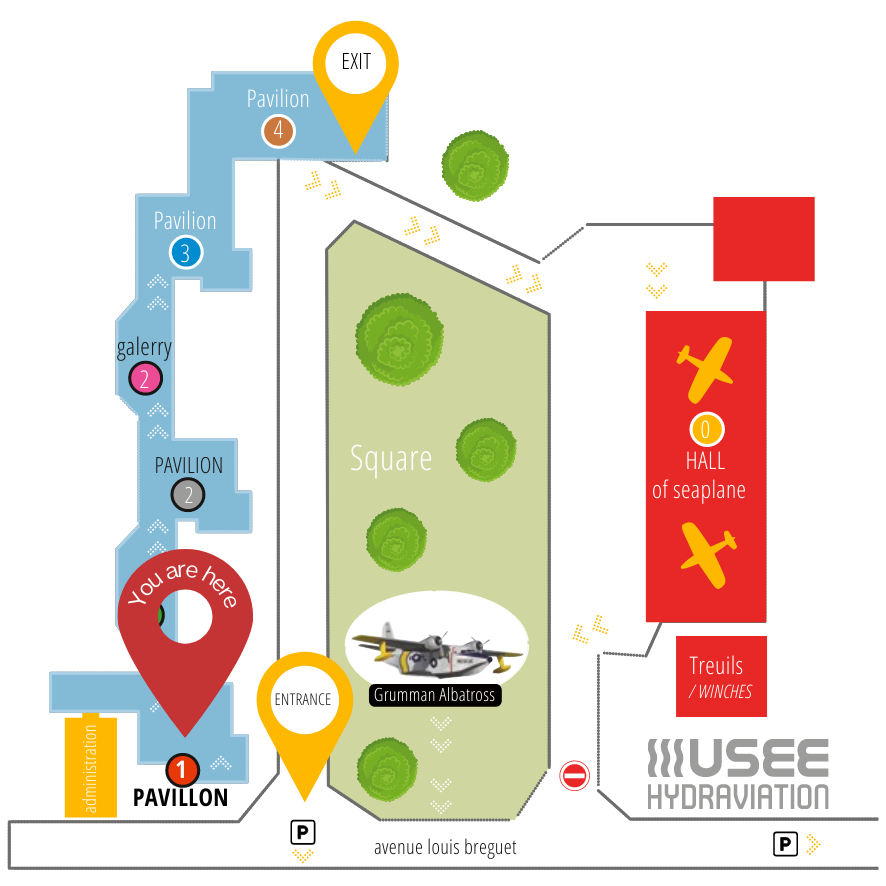
Very early on, humans dreamed of flying like birds. Sitting at the controls of his airplane, the Eole, Frenchman Clément Ader was the first man to report
having flown using an engine, back in 1890. He was followed by the first controlled flight in a motorized airplane, by the WRIGHT brothers (USA) in 1903.
In 1670, many forerunners would take an interest in how to make something heavier than air take flight from the water, and thus launched into the adventure of the flying boat or, as it quickly became known, the seaplane. For example, the manufacturer and pilot Blériot attempted to equip landplanes (like the Blériot II) with floats, but unsuccessfully.
1910 - HENRI FABRE AND THE BIRTH OF SEAPLANE
Henri FABRE (1882-1984) created the first seaplane in the world from zero. Unfortunately, his first craft, built in 1908, the Trimoteur (model in the middle of the room), was too heavy to lift out of the water, due to the weight of its three engines. Fabre did manage to get his Canard with floats out of the water and land it on the Etang de Berre on March 28, 1910. The flight was certified in a report produced by a bailiff (copy of the report).
A float from the Fabre Canard is on display at the back of the workshop.
Henri Fabre, the son of a family of sailors and shipwrights, received financial support for his projects from his family. Once it became too costly to manufacture planes, he devoted himself to the creation of floats for the airplanes of other pioneers and aviators. In the end, he lost everything and turned to making furniture. He married Germaine de Montgolfier and lived to the age of 102. Bearing in mind that he traveled on board the Concorde, you could say that he experienced the entire technological evolution of aeronautics.
In 1911, a few months after Henri Fabre’s flight, the American Glenn Hammond CURTISS claimed to have been the first man to successfully lift his plane with a central float, the Curtiss No. 1, out of the water. Luckily for Henri Fabre, thebailiff’sreport confirmed that he was, in fact, thefirst man to take off from a body of water, recording his name in history as the “father of the seaplane.”
FIRST FLYING BOAT : THE DONNET-LÉVÊQUE
In 1912, the French pilot and engineer François Denhaut built the Donnet-Lévêque, the first flying boat. For the first trials, Denhaut left the hull flat-bottomed. This caused a suction effect, so the craft was unable to take off. He then added an indentation under the hull, called a “step,” which created an air bubble that overcame the suction and allowed the seaplane to lift off.
The craft was equipped with small balloon floats under the lower wing, which allowed the seaplane to steady itself on the water.
The line production of seaplanes began with the construction of the Donnet-Lévêque. Those planes were used by the French Navy. A full-scale reproduction of the craft can be found in the exhibition hall.
world war I - 1914-1918
During the First World War, both types of seaplanes – floatplanes and flying boats – were used. Their primary missions involved locating and monitoring submarines. The Great War would provide an opportunity for the spectacular development of seaplanes in every industrialized country and for significant advances in their technology.
When fighting first broke out, the pilots and copilots would lob all sorts of projectiles (bricks, grenades, darts, rope, etc.) at the enemy. As technology improved, airplanes and seaplanes were outfitted with machine guns and started to carry bombs. It took significant testing to develop a synchronized machine gun that could open fire without hitting the propeller blades.
PROPELLERS
The Museum’s collection includes multiple propellers. They are mainly made of glued hardwood (walnut, mahogany, beech, maple, etc.). In many cases, a mix of woods is used. On display in Pavilion 1 are a two-blade propeller from a Nieuport, a 1917 Breguet XIV two-blade prop and a four-blade Chauvière propeller for a 280 hp Renault engine.
seaplane race - 1912-1938
Racing seaplanes started to be developed with the organization of major competitions that resulted in tremendous progress in aviation, specifically in the fields of aerodynamics and motorization.
The first seaplane race was held in March 1912. The events included take-offs and landings on still water, rough water and with multiple passengers. True records were established.
The first Schneider Cup – one of the most famous – took place in April 1913. It was a closed-circuit speed race, in which seaplanes from multiple countries competed. In 1926, the Macchi M.39 (the red plane hanging from the ceiling) represented Italy in the Schneider Cup. The left wing is slightly longer than the right, to
allow the aircraft to make tighter left turns, because all of the bends in the course went in that direction.
Pierre-Georges Latécoère 1883 - 1943
Pierre-Georges LATÉCOÈRE, the son of an industrialist, inherited railway equipment manufacturing plants based in Montaudran, near Toulouse. He came up with the idea of recovering military planes from World War I and converting them into civil aircraft. He was a true visionary, and his famous statement says much about his character and his decisive personality: “I have re-done my calculations: our idea is unworkable. There is only one thing left to do: make it work.” Over the course of the 1920s and despite the difficulties encountered, he went on to set up airborne mail along the France-Spain-Morocco route (March 9, 1919), creating what would eventually come to be Aéropostale (1927). He then started to plan
for the creation of a long-distance route connecting France to South America. This was the basis for the world’s first air routes.
Enamel plaque of Latécoère’s prices for sending mail or transporting passengers by air.
The showcase displays some of his personal belongings: hat, pince-nez, gloves
and makila (Basque cane), as well as medals, including the Legion of Honor. The envelopes with red borders were among the first mail sent by Aéropostale, to differentiate them from ordinary mail.
Showcase containing Pierre-Georges Latécoère’s original flight suit. Although he was not a pilot, he did participate in the test flights. The outfit kept him warm, because the inside was fully mink-lined. He also wore a leather mask to protect his face from frostbite. The fur-lined boots slipped on over his regular shoes.
from L’AÉROPOSTALE to AIR FRANCE
The airplane and then the seaplane, which was essential to crossing the South Atlantic, were soon employed to transport regular mail.
Pierre-Georges Latécoère and his partner Beppo DI MASSIMI founded the Société des Lignes Latécoère, the future Compagnie Générale d’Entreprise Aéronautique (CGEA), which performed the first Toulouse-Montaudran-Barcelona flight on BEPPO DE MASSIMI December 24, 1918. The route was later extended to Rabat, and the first mail was routed from Toulouse to Rabat on September 1, 1919.
“La Ligne,” as it was then called, was taken over by Marcel BOUILLOUX-LAFONT and became the Compagnie Générale Aéropostale in 1927, more commonly known as “Aéropostale”. That transatlantic air route was devoted to postal services, but also to passenger transportation.
The map that was drawn by Marcel MOINE, Chief Engineer at Latécoère, shows the route and stops on the South American route. Starting in 1928, only escort vessels (rented from the Navy) could transport mail along the 3,200 km (2,000 miles) between Dakar and Natal. At that time, the crossing took five days but then, on May 12-13, 1930, aboard the Latécoère 28-3 christened the Comte de la Vaulx, the famous pilot Jean MERMOZ and his crew made the first commercial crossing of the South Atlantic between Dakar and Natal, reducing the mail carriage time to 21 hours and 30 minutes.
Although everything went fine on the way out, the return flight took 53
attempts before the seaplane was able to take off. It eventually ran out of oil and was forced to land at sea, a few kilometers before reaching the coast of Africa. The ship Le Phocée came to its aid and was able to rescue the crew and the mail, but the ship was lost.
Nevertheless, this feat reduced the postal carriage times between Paris and Santiago de Chile, a distance of 13,380 km (8,300 miles), by four days.
Pierre-Georges Latécoère had launched the production of the Latécoère 300, Croix du Sud, seaplane for Aéropostale, but it was delayed. He then decided to convert a Latécoère 28 landplane into a Latécoère 28-3 seaplane, the “Comte de la Vaulx”, by equipping it with floats.
As a result of financial problems, the courts ordered Aéropostale’s dissolution in 1931, and the French State assumed its assets in 1933 under a new group named Air France , which encompassed the French aviation companies, Air Orient, Air Union, CIDNA, SGTA-Farman and the CGEA.
Seaplanes were then used to experiment with regular routes to carry postal cargo in the South Atlantic and to transport passengers in the Mediterranean, on the routes Antibes-Ajaccio, Marseille-Algiers and Marseille-Beirut, the longest in the world. CAMS 53, Lioré-et-Olivier and Breguet planes were used for this.
forays, Explorations - First gallery
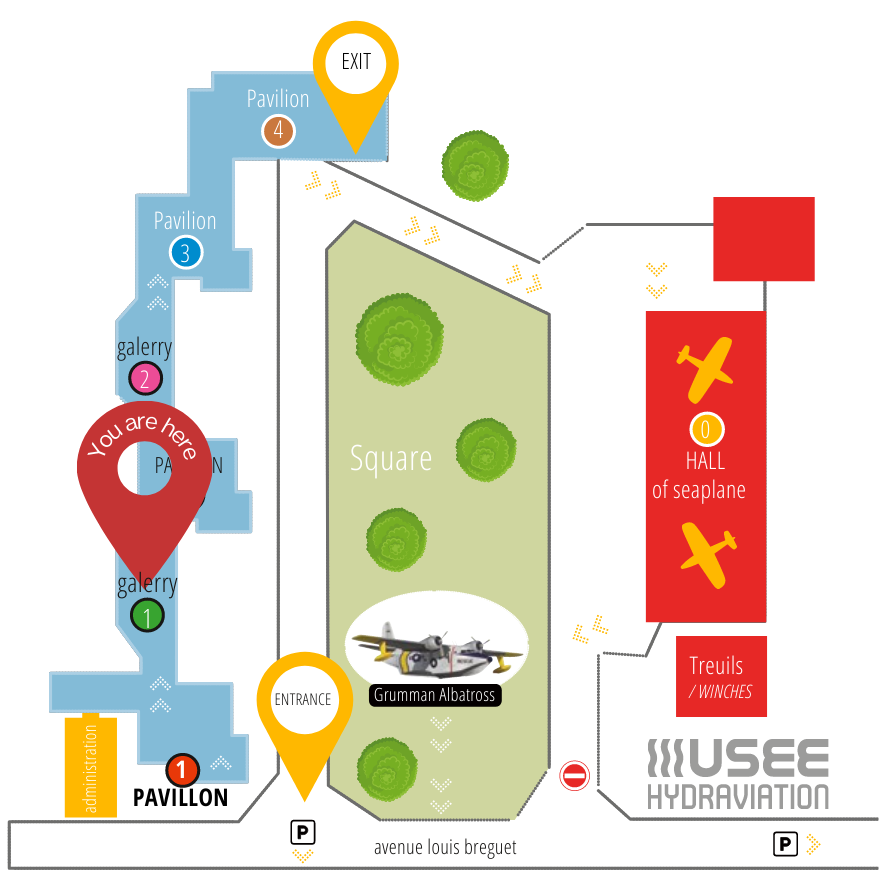
Thanks to their versatility, seaplanes were able to explore lands which were still inaccessible to airplanes. The number of forays, to cross the North or South Atlantic or simply to explore the world, were increasing in number. Military surplus seaplanes from World War I were modified to make them better-suited to the requirements of major forays. Later on, special seaplanes were developed, like the Dornier Wal and the Sikorsky S-38 and S-39.
NAVY CURTISS NC4 – 1919
1919 was the starting point when an American Curtiss NC-4, commanded by Albert Cushing READ, made the first aerial crossing of the North Atlantic, in a total of 57 hours of flight.
ROALD AMUNDSEN’S ARCTIC EXPEDITION
World-renowned Norwegian explorer Roald Amundsen used the Dornier Wal – the best type of flying boat at the time, made entirely of metal – for his North Pole expeditions in 1925. After departing with two Dornier Wals, registered as N24 and N25, he had to abandon the N24, after it broke down 250 km (150 miles) from the North Pole. To get the Dornier Wal N25 to lift out of the
water, the six crew members sawed blocks of ice out of the ice pack, which they adjusted to make a very steep take-off strip along which they could slide in order to take flight. The expedition would become one of the most extraordinary exploits in the history of major aerial forays.
DISAPPEARANCE OF THE LATHAM 47
May 1928 – The Italian airship Italia set off on an expedition to the North Pole under the command of the Italian General NOBILE, a direct rival of Amundsen. Caught in a storm, the airship was wrecked and broke in two. Some of the crew, plus a tent and radio and some food, fell onto the ice pack. The other crew members, stuck in the gondola of the drifting airship, were never found. The safe and sound portion of the crew sent out distress calls, and different countries mobilized to rescue them.
Roald Amundsen asked the French State for a plane he could use to rescue the crew. The only aircraft that France could offer was the Latham 47, which was about to set off for the southern hemisphere. In other words, it was not equipped for cold of the Arctic. The crew of French sailors picked up Amundsen in Norway and flew off toward Spitsbergen. They were never seen again. Only the Latham’s wooden balloon (a small stabilizing float) and gas tank
were found. The survivors of General Nobile’s expedition were rescued.
the commercial conquest of the seas
The exploration of the world and all of the feats achieved suggested a future for transportation by seaplane. During the interwar period, giant seaplanes competed with transatlantic liners and transported passengers along regular routes over the oceans, connecting the Americas to the rest of the world. It was the golden age of seaplanes!
DORNIER DOX, THE GIANT
The DO X occupies a special place in the history of seaplanes. In 1929, the German company Dornier created this seaplane, a veritable flying palace that could carry up to a record 169 people! At the same time, though, it was extremely heavy and flew over the water at an altitude of just 500 m (1,600 ft) and at a speed of just 150 kph (93 mph), despite its 12 engines. It was nicknamed the “liner of the skies.” It flew around the world from 1930 to 1931. The interior was very luxurious, to be able to
accommodate wealthier passengers.
CAPRONISSIMO CA 60
This nine-winged seaplane, or triple triplane, was built in 1921 by the Italian manufacturer CAPRONI, designed to carry 100 passengers on Adriatic crossings. During its test flights, the plane’s fuselage was ballasted with sandbags, in lieu of passengers. At the time of take-off, the improperly-stowed sandbags slid toward the back. The main keel beam and the hull were broken in two. Despite Caproni’s efforts to rebuild the Ca.60, a fire would eventually put an end to the adventure!
PROVISIONS AND CATAPULT
At this time, seaplane flight ranges tended to be limited, as was the case with the German Dornier Wal on the South American route. A German ship, the Westphalen, was positioned halfway along its course, towing a rigid sail behind it, on which seaplanes could land. The planes were then hoisted up by a crane and placed on the rail of a catapult for refueling before being catapulted into the air to finish their journeys.
SHORTS SEAPLANES
The commercial seaplane business expanded in the British Empire between 1936 and 1939. Imperial Airways ordered two-deck Short S23 to transport mail and passengers. They served Egypt, the Indies, Eastern Africa, South Africa, Malaysia and Australia. After World War II, during which Short seaplanes played an important role, some of them would resume this service up until 1947.
AND IMPERIAL AIRWAYS AND BOAC SHORTS
The Class C Shorts of Imperial Airways, then BOAC (British Overseas Airways Corporation) also started to stop at the lake in Biscarrosse and the seaplane base in Les Hourtiquets in 1939-1940, creating a diversion stop for their route to Africa and the Indies.
The Short Mayo Composite was one of the oddest experiences in civil air transport, along the Ireland-Canada route.
Biscarrosse, gateway to the Atlantic - second pavilion
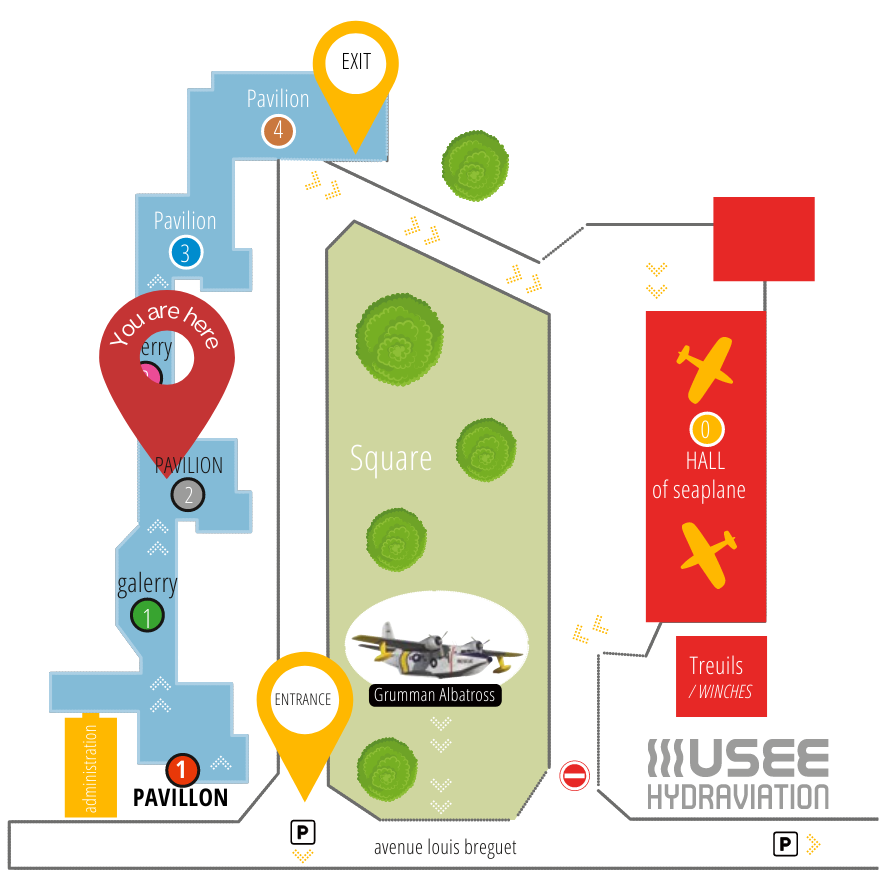
Biscarrosse, gateway to the Atlantic? Yes, Biscarrosse, with its lovely lake, would become, for a time, the center of a gigantic aeronautical complex, from which Latécoère’s large seaplanes would take off and where others from around the world would stop.
LATÉCOÈRE ASSEMBLY AND FLIGHT-TEST BASE
When Pierre-Georges Latécoère launched the production of seaplanes to cross the South Atlantic, he looked for the ideal body of water where he could set up
a seaplane assembly and flight-test base. It was initially installed in Saint-Laurent-de-la-Salanque, near Perpignan, whose lake presented a number of limitations, but then he discovered Biscarrosse’s
southern lake. Its freshwater, strip of dunes protecting against westerly winds, and area of 35.4 km² (13.7 sq mi) provided for a water take-off strip around 10 km (6 miles) long.
The base was set up in 1930, with a large hangar, offices and slips that were used to slide the seaplanes onto the water. The parts, however, were manufactured in plants in Montaudran, near Toulouse, and were taken to Biscarrosse by road convoy. At a time when Latécoère seaplanes were growing ever bigger, the base’s hangar was likewise expanded, and the roofs of the two buildings formed a V shape. In 1956, the snow that had accumulated in that V after a major snowstorm caused the roofs to collapse in on the seaplanes inside the hangar. That incident marked the beginning of the end of production of Latécoère seaplanes. During the 1950s, landing strips and airports started to be built all over, close to big cities. No longer was humankind dependent on bodies of water for an airplane to take flight. Additionally, landplanes demanded less maintenance than seaplanes.
THE MYTHICAL LATÉCOÈRE FLYING BOATS
More than 120 Latécoère seaplanes took off from Lake Biscarrosse, although some left a deeper imprint on the city and on the history of aeronautics.
Croix du Sud Latécoère 300 – The spare parts for the Latécoère 300 postal seaplane christened the Croix du Sud were transported by truck from Toulouse to Biscarrosse. Latécoère’s test crew performed technical testing on Lake Biscarrosse. The seaplanes were then entrusted to French Naval Aviation pilots, the best pilots of the era, for experimental voyages intended to provide proof of the qualities of the aircraft.
The Croix du Sud was then passed on to Air France for postal crossings between Dakar and Natal. Jean Mermoz, the famous pilot and icon of his era, would disappear at sea along that South American route, on December 7, 1936, along with his crew members Pichodou, Lavidalie, Ezan and Cruveilher. The last words uttered before the accident were, “Let’s cut the right rear engine...”
Lieutenant de Vaisseau Paris Latécoère 521
This seaplane, built in 1935 to transport passengers, in response to the German Dornier DO X seaplane, was made for North Atlantic crossings. This French “liner of the skies,” with its sumptuous interior design, could carry up to 72 passengers. It was used by Air France Transatlantique, a company created by Air France and “Transat” for experimental flights between Biscarrosse and New York in 1938 and 1939. The most famous flight was the direct one from New York to Biscarrosse, made on July 14, 1939. On board the plane were Henri GUILLAUMET, as chief pilot, and Antoine de SAINT-EXUPÉRY, as a passenger. The Latécoère 521 also linked Biscarrosse to Fort-de-France for testing.
The small teapot comes from the very lightweight silverware that was made in 1935 for the Latécoère 521, the Lieutenant de Vaisseau Paris.
Latécoère 631, then the largest seaplane in the world
In 1937, the Ministry of Air launched a request for proposals to manufacture a seaplane airliner for Air France. Both SNCASE, with its SE.200 seaplane, and Latécoère were in the running. In the end, the Latécoère 631 was chosen. Christened the Lionel de Marmier, the seaplane could carry up to 40 passengers (lying down). The prototype was captured by the Germans in 1942 and taken to Friedrichshafen, Germany, where it was bombarded and sunk in Lake Constance. The second aircraft was concealed near
Toulouse and returned to Biscarrosse to fly in 1945. Starting in 1947, it flew between Biscarrosse and the West Indies (Fort-de-France), with a stop in Port-Etienne. This regular passenger route was interrupted after a year, following the accident that occurred on August 2, 1948, when the aircraft was lost with all hands in the Atlantic. The 631s were then converted into cargo seaplanes, to carry freight to Africa. After repeated accidents, the Latécoère 631s were banned from flying in
1955.
Latécoère 631 wing section
In the middle of the room, a wing section from the Lionel de Marmier Latécoère 631 is on display. The piece corresponds to the red outline on the photo on the information sheet. A full Latécoère 631 wing contained about 50 of these segments, for a total wingspan of more than 57 m (187 ft). Inside this wing is a sort of tunnel, which mechanics would use to get around, in the case of an incident involving the engines while in flight.
Latécoère 631cabin
This is a faithful replica, made of all original parts: the windows, chairs, shelf, wall lights, sink, towel bar, bathroom accessories, ladder, etc. Because the trip from Biscarrosse to the West Indies took a day and a half, with one stopover, passengers were able to sleep on board the seaplane. For that reason, the seats could be converted into bunk beds. A ticket cost the equivalent of €10,000 today.
TRANSATLANTIC SEAPLANE BASE IN LES HOURTIQUETS
The only seaplane base in France was created in Biscarrosse, in 1937, by order of the Ministry of Air. Les Hourtiquets seaplane base was used by large Latécoère planes and by English and American Clippers. During World War II, the base was occupied by the Germans, who dynamited it before their evacuation. It would then be partially reconstructed and would remain in operation up until 1958.
STOP IN BISCARROSSE FOR BOEING SEAPLANES OF PAN AM
Pan Am (Pan American Airways) also ran “liners of the skies” called Clippers. A New York-Berre route even had stops in Lisbon and Biscarrosse. This was covered by the Boeing 314 christened the Yankee Clipper, and then by the Dixie Clipper. The route was shut down in 1939.
World War II put an end to the developing of both experimental and regular commercial crossings.
ROGER BONNOT - second gallery
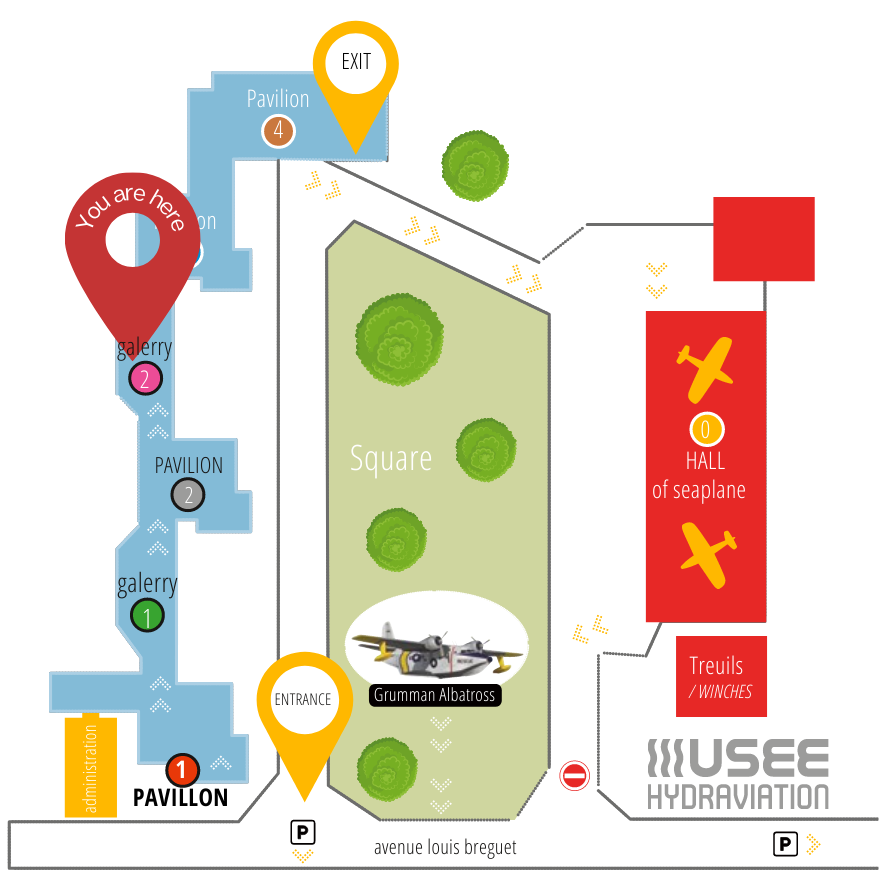
Captain BONNOT, a naval officer and first commander of the Croix du Sud Latécoère 300 and of the Lieutenant de Vaisseau Paris Latécoère 521, played a decisive role in the choice of the site in Les Hourtiquets for the creation of the first seaplane base in Europe and the only one in France. This collection of personal belongings testifies to the life of the famous commander: flight logs, a press book, photos, decorations and tie of a Legion of Honor Commander, cartoons, insignia, etc.
The engraved magnifying glass comes from the Latécoère 300, the Croix du Sud.
Louis Breguet
The aircraft builder Louis Breguet is born in Paris in 1880. He soon took over the family business, where he worked on engines, in particular. In 1911, he founded the Société des Ateliers d’Aviation Louis Breguet, which would allow him to produce his first seaplanes, the HU-1, 2 and 3, followed by military seaplanes, the most famous being the Breguet 521 “Bizerte”, 730 and 790.
In 1939, P.G Latécoère sold his base in Biscarrosse to Breguet, who would manage it until 1954
The painting was realized by Feodor Chaliapin.
the war EFFORT
On the eve of the Second World War, the number of seaplanes built in different countries around the world attests to the technical progress that had been made, but also to a lack of interest in military seaplanes.
The French Air Force, created in 1933, was equipped with airplanes, with seaplanes being used by Naval Aviation. The interwar period saw the emergence of new missions entrusted to Navy aircraft, namely including surveillance, observation, exploration
(maritime patrols and shipborne seaplanes) and torpedoing.
As for Pierre-Georges Latécoère, he built a torpedo seaplane, the Latécoère 298. In total, 96 of those planes were assembled at the base in Biscarrosse, equipped with Hispano-Suiza engines. The corresponding toolbox was fairly small in size.
On the eve of World War II, the seaplane flying school in Hourtin was outfitted with CAMS 37 craft: propellers, copper radiators, oil tanks and more were bound in Biscarrosse’s northern lake, near Cazaux.
The largest seaplanes were used in anti-submarine warfare. Those reconnaissance seaplanes were often military versions of civil aircraft. For example, the Croix du Sud Latécoère 300 became a Latécoère 302, the Mounayres. Three Latécoère 302s formed the E4 Squadron, based in Biscarrosse and commanded before the war by Lieutenant Commander JOZAN.
CONSOLIDATED PBY CATALINA
This American seaplane, designed by Consolidated and dubbed “the Queen of the seas,” was the most commonly-built seaplane in the world, with a total of 3,282 manufactured. Made very popular by its versatility, this amphibious seaplane could set down on either land or water. To do that, it was equipped with retractable wheels and balloon floats. It was widely used for far-away patrols in the Atlantic and Pacific, due to the reliability of its star-shaped Pratt & Whitney 1,200 hp engines. It would also be used by many Allied countries.
But the Catalina was flown on a variety of different missions: military, espionage, forest firefighting (it is the ancestor of the Canadair planes) and documentary film-making (Jacques Cousteau). Some of them, now rare collector’s items, are still flying today and return to Lake Biscarrosse for the International Seaplane Event or for pilot training.
transatlantic seaplane in les HOURTIQUETS - third pavilion
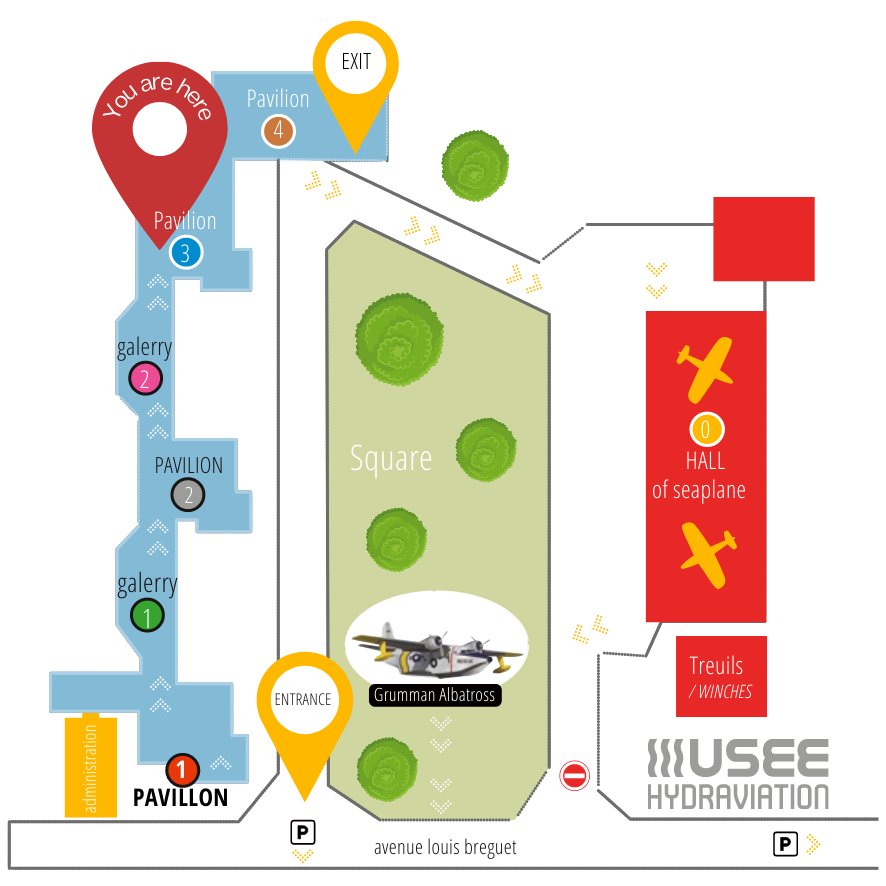
France had fallen behind in the commercial conquest of the North Atlantic and urgently needed a seaplane base. Several big cities in France submitted their candidacies to host it. In the end,
Biscarrosse was chosen, both for its geographic location and for its aeronautical history. The construction of the seaplane base in Les Hourtiquets, on the western shore of Lake Biscarrosse, began in 1938, and the first experimental crossings, to the West Indies and New York on board Latécoère 521s and 522s, were launched in 1939. The seaplane base in Les Hourtiquets had a tarmac and maintenance hangars, offices, a control tower
and a hotel for passengers.
Its construction was completed in 1939, during the German Occupation. During that time, Blohm und Voss 222 Wikings and 138s, Dornier 24s, Heinkel 60s and Arado 196s were based there. The occupying forces would leave the base for good on August 23, 1944, destroying everything that they could on their way out.
Latécoère 631 flights from the base resumed in 1945. But a series of accidents would lead to a flight ban for those seaplanes and, with it, an accompanying slowdown in activities at the base. In 1963, the seaplane base was determined to be useless and was transferred to the French Ministry of the Armed Forces, within the scope of the CEL (Landes Test Center): the old offices and the control tower became listed buildings, and the hotel was rehabilitated and used by the military.
World War II - 1939-1945
As veritable all-purpose machines, seaplanes were employed in diverse missions during the armed conflict. But airplanes were developing (large-scale paved runways and more robust undercarriages making it possible to build larger planes), making seaplanes less necessary.
BLOHM UND VOSS BV 222
This military seaplane was the biggest and heaviest in the war. During the attack on the base in Les Hourtiquets by English Mosquitoes, several of the aircraft were destroyed. The BV 222 was equipped with six engines. This 1,200 hp BMW engine was raised and restored by volunteers from the Friends of the Museum Association. A system is in place, allowing the Museum to run the engine and visitors to see its inner workings, like the pistons, thanks to cross-sectioned cylinders.
FRANÇOIS HUSSENOT’S FLIGHT RECORDER
This flight recorder is one of the first black boxes: its orange color was meant to make it easier to locate in the water after an accident.
FRENCH NAVAL AVIATION SEAPLANES
The SARAM 311 Radio transmitter and receiver was fitted to the Latécoère 523 Altaïr, a reconnaissance and patrol seaplane. Three copies were built for the French Navy. The Breguet 730/731 which was built under German occupation and put into service in 1946 also received thename Altaïr. The other three were Vega, Sirius and Béllatrix. They will be used until 1959. The anchor exposed a little further on, belonged to Latécoère 523.
PANEL OF SEAPLANES USED DURING WORLD WAR II
This panel shows the use and numbers of seaplanes built during the Second World War, including only series of which at least 50 were made. The color green indicates that the seaplane’s main function was the detection and surveillance of submarines. It should be noted that seven prototypes passed the mark of 1,000planes built. Although hundreds of thousands of airplanes were manufactured, only 10,000 seaplanes were...
THE FOREIGN SEAPLANCES USED DURING WORLD WAR II
The Japanese built the Kawanishi Emily, the best seaplane of its time and, above all, the fastest of World War II. They would also be the only ones to build fighter seaplanes, like the Mitsubishi Zero.
The Short Sunderlands were very effective against German submarines (U-boats), which they chased and destroyed during the Battle of the Atlantic.
It is of interest to see that the seaplane configuration of the most famous English fighter plane, the Supermarine Spitfire, is very little-known.
FRENCH NAVAL AVIATION SHOWCASE
This showcase displays several pieces from French Naval Aviation seaplanes, such as various on-board instruments, line-throwing guns, gyrocompasses, Navy compasses, sextants and the control wheel of a SCAN 20. In the middle is the uniform of a Naval Aviation Chief Petty Officer.
fourth pavilion
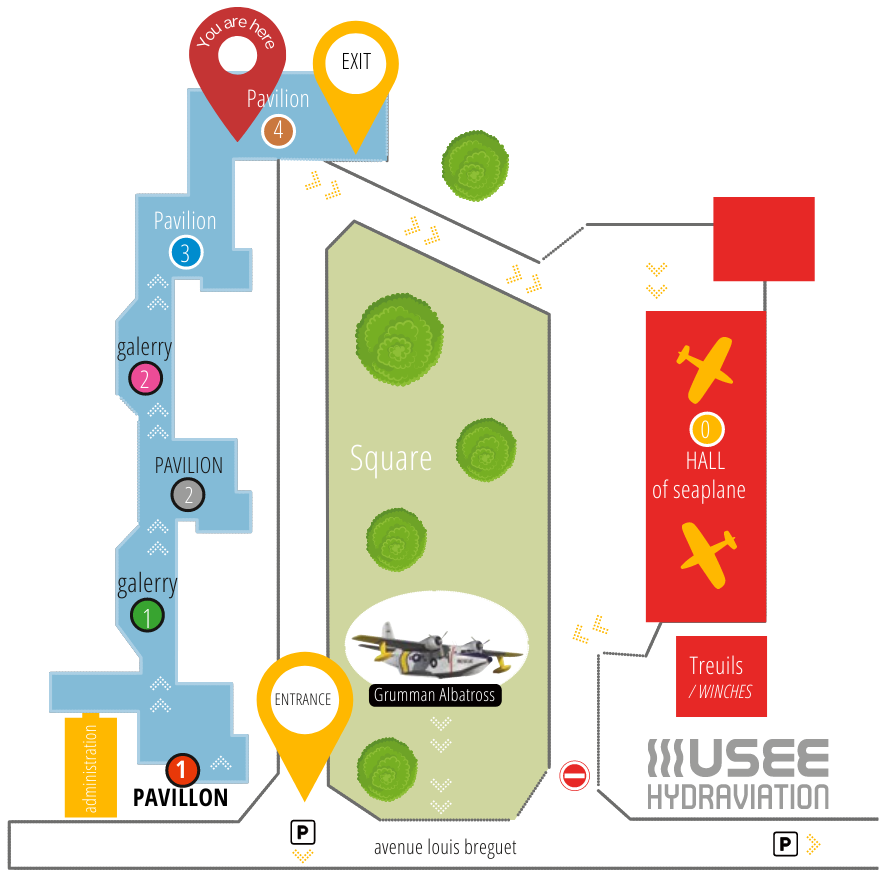
In the post-war period, the development of large airports and more reliable engines also led to the gradual abandonment of seaplanes. After the 1960s, civil and military seaplanes lost their appeal, and line production was limited to rescue seaplanes, lightweight seaplanes used for tourism and recreation, the transportation of passengers and small cargo, but also firefighting.
HUGHES H-4, THE BIGGEST OF ALL
The American billionaire Howard HUGHES wanted to build the biggest seaplane in the world, capable of transporting up to 300 passengers or soldiers. The Spruce Goose, also known as Hercules, only flew once, for 1.5 km (1 mile), at an altitude of 20 m (70 ft), on November 2, 1947. Today, it can be seen at the Evergreen Aviation and Space Museum in Oregon (USA).
GRUMMAN ALBATROSS, THE UNIVERSAL SEAPLANE
A model from the new 2018 acquisition! This American seaplane chiefly spent its career in search and rescue at sea, beginning in 1947. This seaplane, which was made in several versions, could function in any weather, over great distances. Its AN/AP-31 radar system, placed in the nose radome, and the great variety of navigation and radio systems made it highly effective for signal reception. The adaptation of a ski system and the addition of JATO (jet-assisted take-off) made it suitable for multiple missions (patrolling, iceberg destruction, patient transportation, anti-submarine warfare, search and rescue, and passenger and cargo transportation). As a result, it would be used by the US Armed Forces and by 22 countries worldwide.
You can admire the full-scale craft, on display outside the Museum!
Today, seaplanes are primarily used to fight fires, in the form of water bombers.
AIR TRACTOR
This US-built seaplane is employed in Spain for agricultural work. The AT-802F, also known as the Fire Boss, can hold up to 3,524 liters (930 gallons) of water. Scooping is done by the floaters, and dropping, by the fuselage.
BERIEV BE 200
The jet Russian Be-200 is a water bomber that is employed in forest firefighting. Unlike the Canadair (which has a capacity of 6,000 liters – 1,600 gallons – of water), its water tank can hold up to 20 metric tons of water (20,000 liters or 5,300 gallons).
And yet scooping (filling up with water using a sort of shovel installed below the hull of the seaplane) only takes 14 seconds.
CANADAIR
France’s Civil Security water bombers, which were long based out of Marignane (on the Etang de Berre outside Marseille), have since been transferred to Nîmes.
The first water bomber used, the American-made Catalina, was in service for Civil Security from 1963 to 1969. It was followed by the Canadair CL-215, built by the Canadian company, Bombardier. That model, with its water capacity of 5,400 liters (1,400 gallons), was replaced by a more recent version, the Canadair CL-415, in 1996. The new version could scoop up to 6,130 liters (1,620 gallons) of water in 12 seconds. The water was then divided between two tanks inside the plane.
TODAY, manufacturers are developing the prototypes of tomorrow, to respond to civil and military needs. Let’s not forget that 70% of the Earth’s surface is covered with water. Airport saturation, climate change and rising water levels, coastal surveillance and maritime security: all of these and more will be the future missions of seaplanes, working in the service of our planet’s populations and the environment. Are we witnessing the rebirth of the seaplane?





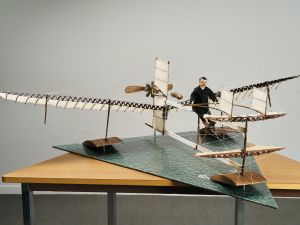
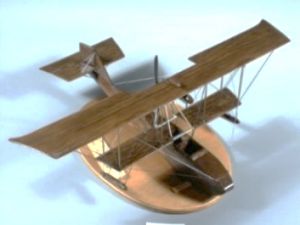
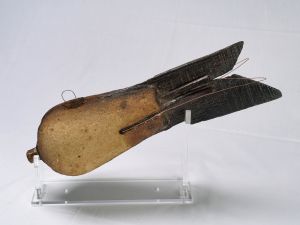
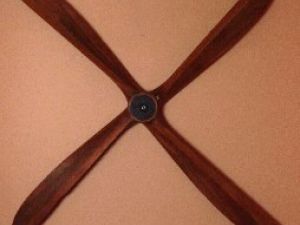
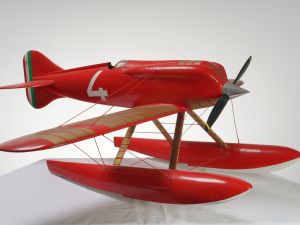

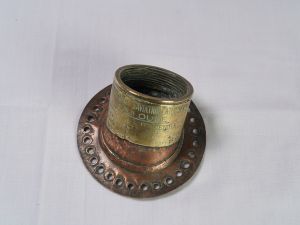
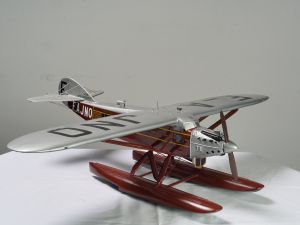
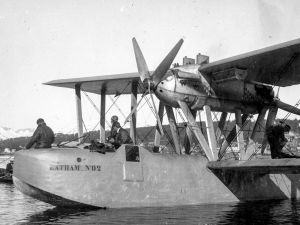
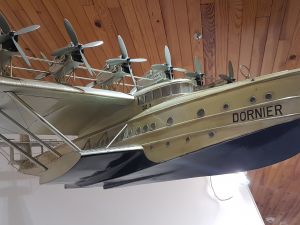
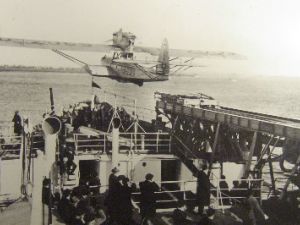
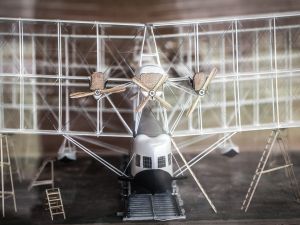
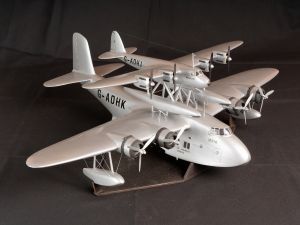
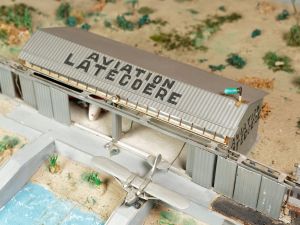
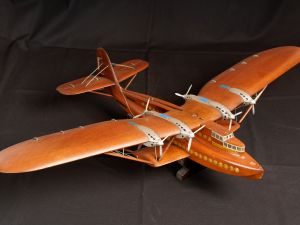
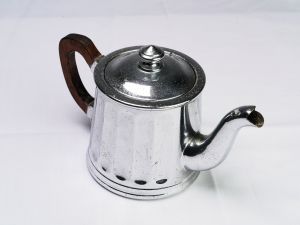
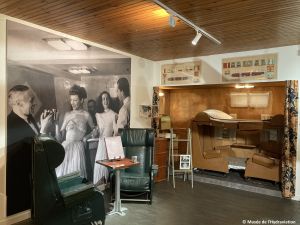
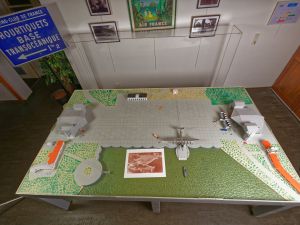
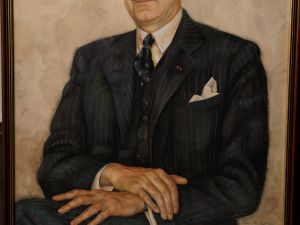
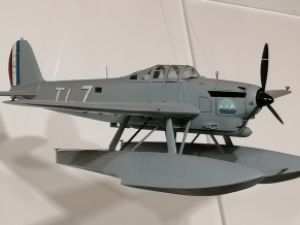
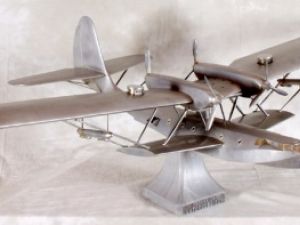
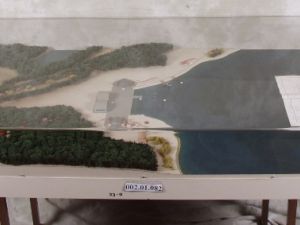

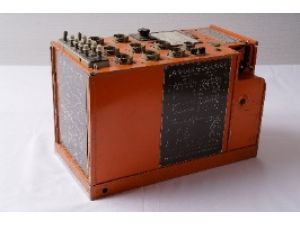
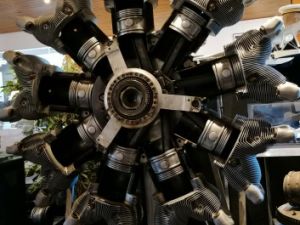
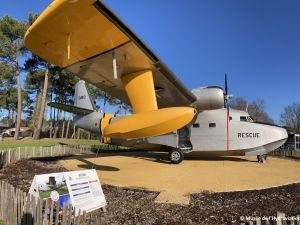



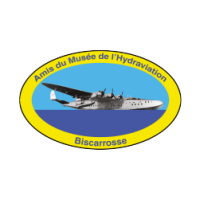












![[Nuit des Etoiles ✨]
Le 4 août, venez explorer les océans... du ciel. À l’occasion de la Nuit des Étoiles, le musée de l’Hydraviation vous invite à une...](/scripts/files/686d16f0026dc6.24648209/516938120_1250602146855368_8658349156228259555_n.jpg)
![[ LANCEMENT DE LA SAISON ✈ ]
À partir du mardi 1er juillet et jusqu'au dimanche 31 août, le Musée de l'Hydraviation est ouvert de 10h à 19h (dernier accès à...](/scripts/files/685d6f15711986.22871072/510247813_1241185067797076_8851865462581326590_n.jpg)